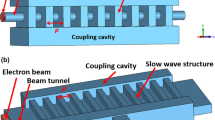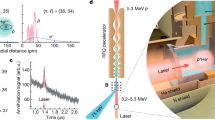Abstract
THE Millikan spark1, which is widely used in the far ultra-violet, presents some drawbacks because of the very high fields necessary for its initiation, and the instability of its operation. It is known that, at atmospheric pressure, very long sparks can be obtained with moderate potentials, if they are produced along the surface of a solid (sliding sparks). So far as we know, this spark had not been tried in a good vacuum, and it was not at all sure that it could be operated without an appreciable gas pressure. This communication describes a few results obtained with one type of sliding spark operated at low pressures.
This is a preview of subscription content, access via your institution
Access options
Subscribe to this journal
Receive 51 print issues and online access
$199.00 per year
only $3.90 per issue
Buy this article
- Purchase on Springer Link
- Instant access to full article PDF
Prices may be subject to local taxes which are calculated during checkout
Similar content being viewed by others
References
Millikan and Sawyer, Phys. Rev., 12, 167 (1918); Science, 50, 138 (1919). Bombke, “Vakuum spektrocospie” (Leipzig, 1937). Vodar, Progrès récents dans l'étude du spectre U.V. Centre de perfectionnement technique (Cours conférence No. 1116, Nov. 1943).
Author information
Authors and Affiliations
Rights and permissions
About this article
Cite this article
VODAR, B., ASTOIN, N. New Source of Light for the Far Ultra-violet. Nature 166, 1029–1030 (1950). https://doi.org/10.1038/1661029b0
Issue Date:
DOI: https://doi.org/10.1038/1661029b0
This article is cited by
-
Sliding spark spectroscopy
Fresenius' Journal of Analytical Chemistry (1993)
-
A method of producing a condensed spark in a vacuum
Journal of Applied Spectroscopy (1966)
-
Use of a sliding spark in the vacuum ultraviolet range of the spectrum
Journal of Applied Spectroscopy (1965)
-
Progrés récents dans l'étude de l'ultraviolet lointain
Microchimica Acta (1955)
Comments
By submitting a comment you agree to abide by our Terms and Community Guidelines. If you find something abusive or that does not comply with our terms or guidelines please flag it as inappropriate.



